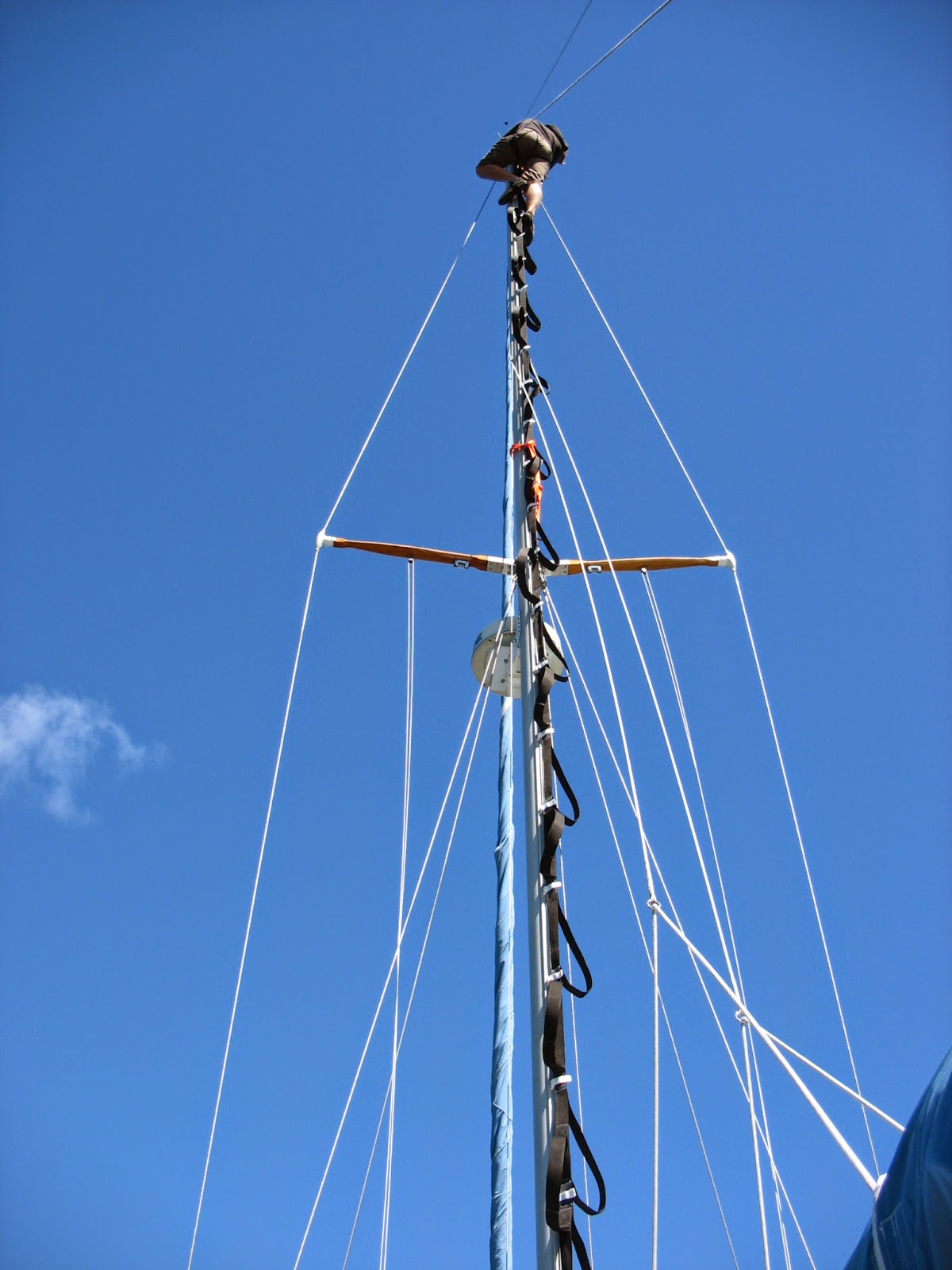So this is a little
out of order but I wanted to write about some of our projects and changes we
made to the boat to get ready to leave Maine. At first we thought we would wait
on self-steering gear until we were further along on our trip as there shouldn't
be much need for it on the ICW. But when we found a used Monitor for about
$2000 less than a new one we couldn't resist. It just needed some minor
adjustments to fit it to our boat. Check out this windy video to see it at work:
Unfortunately we
were not able to get much assistance from the Monitor for our long sleepless
trip across the Gulf of Maine, as we had large following seas the entire time
which are difficult conditions for a self-steering vane to cope with.
Our boat came with
two anchors: a Bruce and a light weight anchor. You can never have too many
anchors and while we have had no issues with the Bruce holding we decided to
add a larger Rocna as our primary anchor. The Rocna looked good from reviews
and is several pounds heavier so we are hoping it will perform well in a
variety of conditions. So far so good. We also added additional anchor rode to
the boat so we now have 300 feet and
will use the old anchor rode and Bruce as a back-up.
Ashley sewed us an
awesome mast ladder that is raised on the main halyard and runs up the track in
the mast. We wanted to check out all the standing rigging and fittings before
we left and this made the job much easier and safer. While climbing the mast we
changed out our mast head light with an LED and replaced the old topping lift
with a larger diameter line that will be able to double as a back-up main
halyard.
While the electrical
demands are pretty small on our simple little boat we decided to size up the
battery bank. This also involved building a new battery box out of marine grade
plywood and fiberglass. After spending several days researching different options
for batteries we decided to stick with the standard wet cell deep cycle
batteries largely due to cost. You get a whole lot more amps for your money out
of a standard deep cycle battery, although they are a little more high
maintenance. At some point we plan to install a solar panel to help make our
boat even more self-sufficient. We don't want to have to run our engine in a
nice peaceful anchorage just to keep our lights going.
The other last
minute projects involved securing anything and everything we could and making
sure the boat was as water tight as possible. We went over the boat a couple
times, checking all the turnbuckles and cotter pins and adding seizing wire to
anything that could possibly wiggle itself loose.
This is just some of the junk that is stuffed into our cockpit lockers.
We have purchased
manual pumps for the sinks and an additional flexible water tank but did not
get around to installing them before leaving Maine. This will be another step
toward making our boat more self-sufficient. The more water we can carry and
the less we use the further we can go.
My mom and brother
made the trip to help us out with the
last of our preparations. After enjoying an unseasonably warm last weekend with
them in Maine we said goodbye and sent Luke home with the Subaru. It feels strangely
freeing to no longer have the car. As long as our car was parked in Rockport we
knew we would be sailing back at some point. With the car gone there are no
more ties holding us in any one place.
Sailing near Camden with my mom and Luke
Leaving Rockport Harbor for the last time




Pretty slick self steering there! I'm not sure I would trust it in crazy weather.
ReplyDeleteCool ladder. Shared it with a local sailing group on Facebook. Great reading.
ReplyDelete